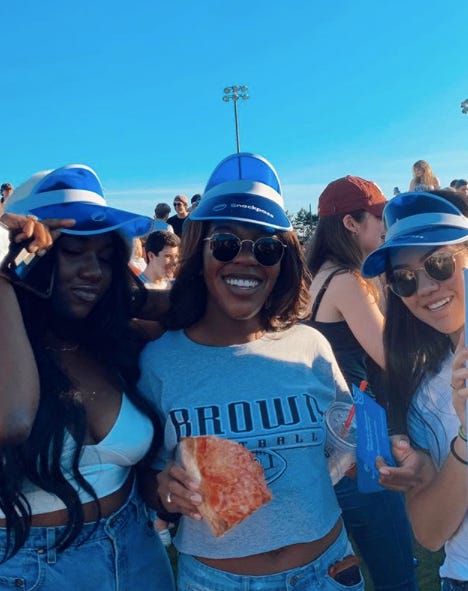🎁Snackpass
The Snackpass story! This is our best one yet!
Let's jump straight in...getting their first 1000 customers.
Snackpass started at Yale. At the beginning it was a discount discovery app for Yale students. Later on, the company pivoted to provide a grab and go offering for restaurants around the campus. They did not raise money for their first year on operations, and instead focused on those two growth levers:
For merchants: Direct access to the Yale student body. They selected the top merchants around campus that people would often visit and gave them access to reach the entire Snackpass Yale users using push notifications..free of charge. That way merchants were able to generate demand for their restaurants at the slow times for their business and test different promotions to see what works. On top of that, they did not require merchants to sign any legally binding agreement, eliminating any downside for "lock-in." You can try out Snackpass, if it works for you you will keep using it, if not...you can just move on
Student publications: Because Snackpass was started by students on focused on students, at the very early days Kevin and the team focused on Yale specific outlets to raise awareness among the student body
Flyers: this was perhaps the only cost center for Snackpass in its first year, printing out flyers and putting them all over campus.
Ambassador program...the Gen Z way.
After playing around with the concept for the academic year, Snackpass team regrouped over the summer to work on this project full-time and that's when things really started to take-off. They hired 60 brand ambassadors all over New Haven to take Snackpass to the next level.
Snackpass would partner with fraternities, athletic teams, and campus groups to Snackpass parties all over campus giving away free gifts, merchandise, and steep discounts for people to try the product. By piggybacking off the "cool factor" of fraternities they managed to pull a cult-like following in every new campus they opened (total now sitting @ 11) and have a student body penetration of over 60% in 6 months from launch in any new campus.
Social at heart.
The last growth lever for Snackpass, which usually kicks in after a campus activation is how the app is designed to be social at its core. Let's rewind a little bit to explore how the app really works.
For every purchase you make you get a "punchcard" specific to that merchant. So once you hit…let's say 10 punches from The Juice Shop you get one free Smoothie. The trick here is you actually get 2 punches or points for every purchase you make, one for you and one you can send to a friend. These are two separate point-systems and so at some point when you earn a free gift, you would concurrently also earn a free gift to send to a friend(you can't redeem the second gift yourself).
And so once they hit critical mass in any campus, the critical aspect of constantly sending free gifts between users, create lock-in and loyalty that expands the reach of Snackpass even further. For many students now Snackpass is a lot more than a food-ordering app...you pissed off your friend: Send them a coffee from their favorite place with a sorry card. Your roommate stayed up all night helping you with your calculus exam...send them a free bagel from their favorite bakery with a Thank you card.
On that note, Thank you for reading this week's edition of First 1000.
See you next week,
Ali Abouelatta

